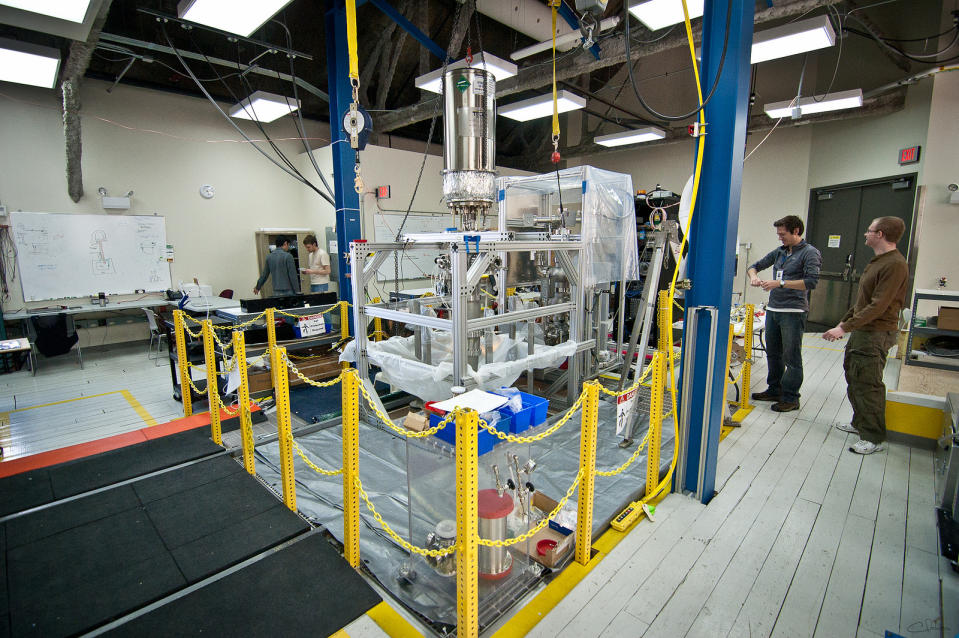Xenon detector finds no dark matter after 20-month study
Another unsuccessful hunt, but the search continues.

Despite being buried a mile under the South Dakota surface and isolated in rock and water for 20 months, the Large Underground Xenon (LUX) dark matter sensor failed to detect anything. While this is yet another unsuccessful attempt to observe the mysterious substance that makes up four-fifths of the universe's mass, at least the findings will help the next hunt.
The scientists, who ran the experiment at the Sanford Underground Research Facility, presented their results yesterday at the International Dark Matter conference in Sheffield, UK. While it's possible that the LUX failed to pick up dark matter while it was active from 2014 to 2016, the researchers are confident that any of it passing through would have been caught. Already the most sensitive detector of the substance during its first run in 2013, the LUX team pushed its performance to four times its original project goals.
As its title implies, the core of the LUX detector is xenon — one-third of a ton of it, cooled to a liquid state and isolated from other interactions by keeping it deep underground and encased in a 72,000-gallon tank of water. The idea was that the leading theoretical candidate for dark matter, weakly interactive massive particles (WIMPs), pass through our bodies all the time but don't react. But if they collide with xenon atoms, they would theoretically produce small flashes of lightning, which external sensors would catch. Alas, no interactions were recorded in the detector's 20-month run.
Despite that setback, the project's scientists haven't scrapped the WIMP idea: the long-run experiment just eliminated a large swath of mass-ranges and interaction-coupling strengths where the particles might exist, the team said in a statement. Unfortunately, this may leave the door wide open for the Large Hadron Collider to be the first to observe dark matter in its experiments later in 2016, which the LUX team had been racing for three years.
Should CERN's colossal atom smasher not achieve it either, the next generation of xenon detectors will be the LUX-ZEPLIN (LZ) experiment, which will have ten tons of the element and expect to achieve 70 times the sensitivity of the original LUX. The more advanced model is expected to be ready for its own dark matter search in 2020.
